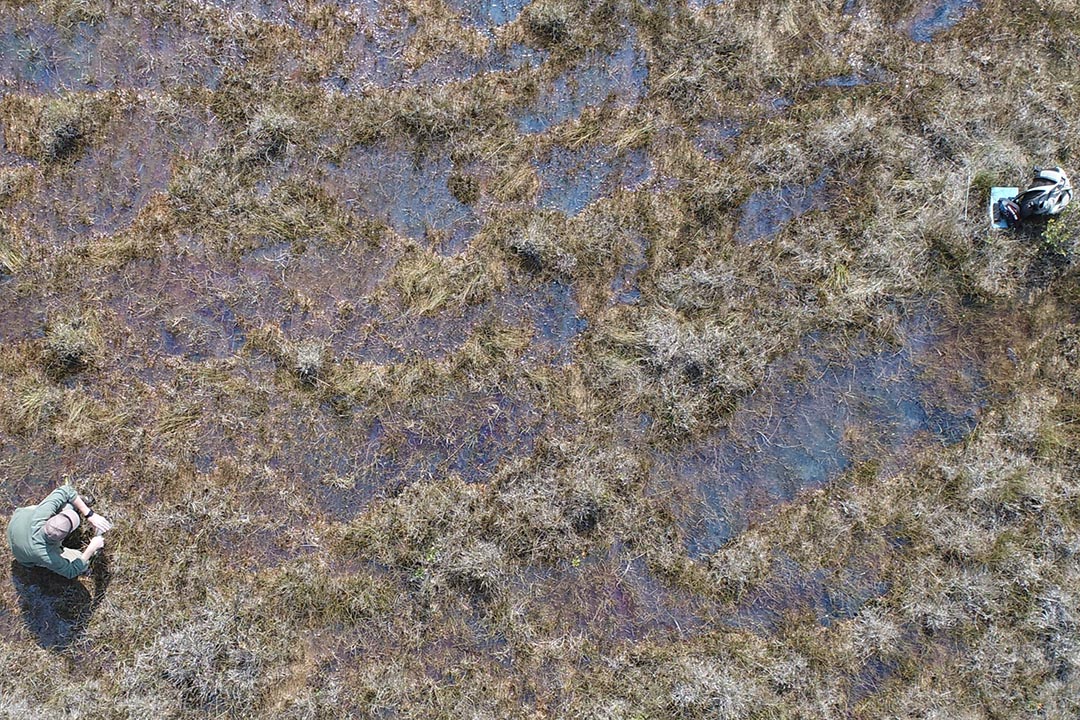
USask partnership with Ukraine advances global conservation efforts
A University of Saskatchewan (USask) research partnership is embracing ties with Ukraine to address global ecosystem health – a challenge further complicated by the Russian invasion.
By Lindsay Herman, Research Profile and ImpactHome to one of the largest populations of Ukrainians outside of Ukraine, the social and cultural fabric of the Canadian Prairies holds deep ties to this country.
A lesser-known link between Saskatchewan and Ukraine is some similarity in their ecosystems and vegetation. In both countries, these natural assets are endangered by human activities and land-use considerations. Parallels between Saskatchewan and Ukraine are paving the way for researchers to examine the benefit of grassland and wetland conservation globally.

Dr. Vladimir Kricsfalusy (PhD), associate professor in USask’s School of Environment and Sustainability (SENS), is leading a two-year project between USask and the National Academy of Sciences of Ukraine’s Institute of Ecology of the Carpathians (IEC) to build on a decade of international collaborative ecosystem research. With support from USask’s International Research Partnership Fund, this project aims to forecast the negative consequences of climate change within endangered ecosystems and to support future conservation efforts in both countries. His team includes Dr. Ivan Danylyk (DSc), director of the IEC, as well as a visiting PhD student from Ukraine, an undergraduate exchange-student from Germany, and several USask-based graduate students.
“This is the place where we learn from each other,” Kricsfalusy said. “From our experiences, from our successes, and sometimes, from our failures.”
International research is not new to Kricsfalusy, who first participated in plant ecology and vegetation science studies with neighbouring European countries from his home in Ukraine. Upon immigrating to Canada, he quickly recognized similarities between the two countries at the ecosystem, plant community, and species levels. Many common species in Ukraine are considered invasive in Canada, and vice versa. Some shared sensitive species – like the prairie crocus – became research models in his studies.
To date, much of Kricsfalusy’s research has involved comparative analysis between the Saskatchewan prairie and the Ukrainian steppe (a grassland region of Southeastern Ukraine). In recent years, the Russian invasion of Ukraine caused significant environmental degradation to the steppe ecosystem, that Kricsfalusy recognized as “a biodiversity heritage area of global significance.”
Unable to continue their work in the Ukrainian steppe, Kricsfalusy and his team are turning their attention to other important and threatened ecosystems present in both Saskatchewan and Ukraine: fen wetlands. A fen is a type of peat-accumulating wetland fed by mineral-rich ground or surface water. Fens take thousands of years to develop and cannot easily be restored once destroyed.
Like grasslands, fen wetlands are endangered locally and globally due to human impact, being regularly drained and filled in the name of agriculture and development. These fen wetlands are species-rich, bog-like areas of high importance, not only for biodiversity conservation, but also from a sustainability perspective: they play a critical role in carbon sequestration, and also store flood waters and naturally release them during periods of drought.
“Wetlands are one of the most important ecosystems, with several ecological and economic benefits,” said Kricsfalusy. “They provide numerous beneficial services for people and wildlife that no other ecosystem can.”
Though missiles can sometimes be heard in the distance, the fen wetlands of Roztochia Biosphere Reserve and Shatsk National Nature Park in Northwestern Ukraine remain safe and viable study sites for the next chapter of the team’s research. In Saskatchewan, fieldwork will take place in the Redberry Lake Biosphere Reserve and Prince Albert National Park.
The team’s analysis of fen wetlands will be the first of its kind undertaken at an international scale between the North American and European continents. Embracing knowledge and input from local and Indigenous communities, their work will involve documenting diversity patterns of indicator plants like sedges and willows, determining threats to habitats and rare species, identifying threatened vegetation for use in future conservation plans, and sharing their data to regional, national, and international databases.
Addressing the complexity of human factors in both Ukraine and Saskatchewan, Kricsfalusy emphasized that their work will be underscored by the conceptual framework of ‘nature conservation.’
“Protecting and restoring fen wetland ecosystems can protect our own safety and welfare, too,” he said. “People should be part of that consideration and actively work to halt biodiversity loss and mitigate climate change.”
Together, we will undertake the research the world needs. We invite you to join by supporting critical research at USask.

